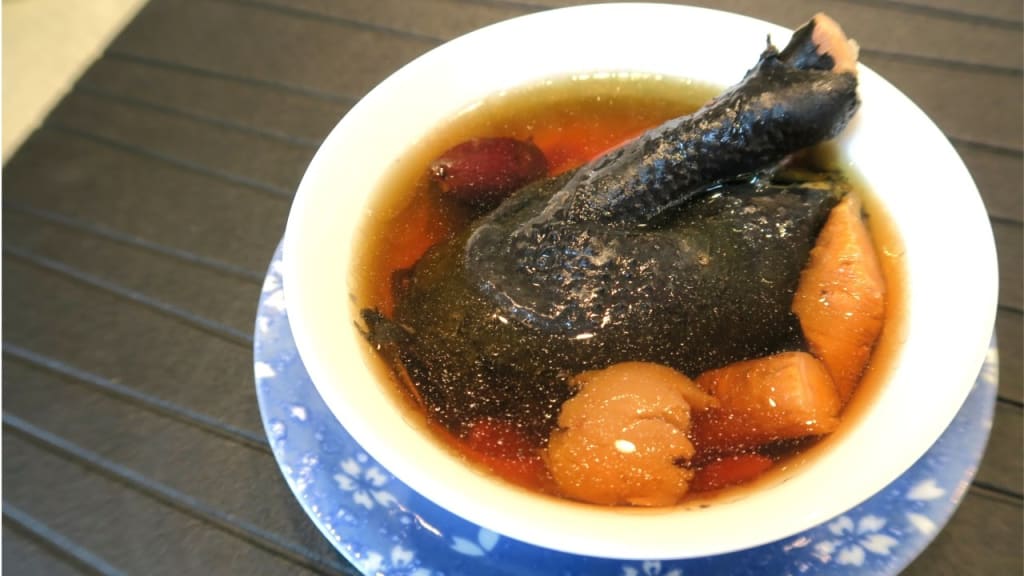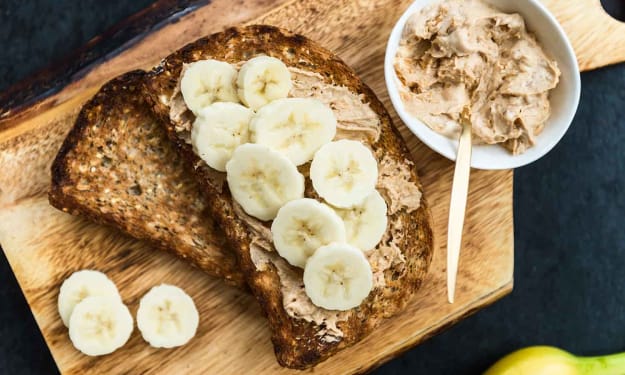These 10 Bizarre Animals That Human Around The World Eat.
Adventurous Eaters with 10 Unusual Edible Creatures"

Humans are regarded as omnivores, which means that they eat a variety of foods, including meat. While meat from chicken, cow, lamb, and pork are popular choices, there are other odd creatures that people around the world eat that may raise questions.
For instance, eating guinea pigs is commonplace in various nations. The fluffy rodents are cooked entire, including their head and feet, as a traditional delicacy in Peru. Spiders, centipedes, and scorpions are common street food snacks in China. On skewers, deep-fried, spiced creepy crawlies are offered. This could appear like a horror movie come to life to some people, but it’s actually a nice and healthy food.
Other strange dishes include jellied moose nose, a dish that is exactly what it sounds like in Canada, and blood sausage, which is prepared from pig’s blood and is available everywhere. In Iceland, fermented shark meat is still a popular traditional dish.
These odd creatures and foods have long been consumed, and doing so is rooted in tradition and culture. These foods are a part of their identity and legacy, despite the fact that some may find them strange, if not downright disgusting and unappetizing.
Overall the bizarre animals that humans consume around the world are a testament to the unique and diverse culinary experiences that exist across the globe.
Here are the 10 most bizarre animals humans eat.
1. Witchetty Grub
An indigenous to Australia, the Witchetty grub is a large, creamy-white larva that resides in the roots of some eucalyptus trees. It has a lot of fat and protein.
In Australia, Witchetty grubs are one of the most sought-after wild delicacies. Aboriginal people used to gather them off the Witchetty Bush’s trunks since they were a crucial component of their diet. Many Australians still like eating and preparing Witchetty Grubs today.
Witchetty Grubs are most frequently prepared by roasting them over an open flame or over hot coals. The grubs are first carefully taken out of the Witchetty Bush and cleaned. They can then be roasted until the outsides are crisp and golden brown by being placed on a stick or skewer. The grub’s interior ought to be tender and moist.
2. Tarantulas
Tarantulas are a delicacy in Cambodia and are frequently fried and served as a snack or starter.
The typical method for capturing tarantulas in the wild involves a bamboo stick and a container. The tarantula is forced out of its burrow with a stick, and is then captured by placing a jar over the hole. After being captured, tarantulas are cleaned, and the hairs on their bodies are burned off. Only the body remains after the legs and fangs have been cut off.
The tarantulas are then marinated for a few hours in a mixture of salt, sugar, and garlic to add flavor.
The tarantulas are subsequently deep-fried till golden and crisp.
Typically, a dipping sauce consisting of lime juice, Chile, and black pepper is served with the fried tarantulas.
3. Haggis
Various sheep parts, including the heart, liver, and lungs, are combined with onions, oats, suet, spices, and salt before being wrapped in a sheep’s stomach lining and boiled. Haggis is a classic Scottish delicacy.
It Is sometimes served with neaps and tatties (turnips and mashed potatoes) and a dram of Scotch whiskey and has a uniquely savory and earthy flavor. Along with Cullen skink and Scotch pies, haggis is frequently considered to be the nation’s signature dish and has been a mainstay of Scottish cuisine for centuries.
4. Hákarl
The meat of the Greenland shark is used to make the traditional Icelandic meal Hákarl. After being caught, the shark is buried underground for a while so that it can ferment and then dry. The ultimate product is a beef with a strong ammonia smell that many find difficult to stomach.
Hákarl, while having a strong flavor and aroma, is regarded as a delicacy in Iceland and is frequently served as a companion to Brennivn, the nation’s national beverage. Additionally, it is a well-liked meal among visitors who are eager to sample distinctive and interesting local food.
5. Kangaroo
Indigenous Australians have relied on kangaroos for food and other resources for thousands of years. However, it took until the middle of the 20th century for non-Indigenous Australians to start consuming kangaroo meat. Kangaroo meat gained popularity as a protein source in the years following World War II because it was plentiful, lean, and reasonably priced when compared to other meats.
The government considered the enormous kangaroo population as a pest that needed to be controlled, thus it was marketed as a patriotic duty to eat it. Although kangaroo meat is still consumed today, it is frequently regarded as a specialty culinary item.
6. Sannakji
Live octopus is used in the Korean cuisine known as sannakji. It’s a specialty that’s often found along the country’s coasts. The dish is made by chopping up a live octopus into little pieces, which are then served right away. The dish is definitely a sight to behold and difficult to eat because the octopus pieces are still alive and writhing when it is presented.
Diners often pick up the writhing pieces of Sannakji with chopsticks and then dip them in a soy sauce and sesame oil mixture to consume. The octopus is still moving as it is being consumed, which might be difficult for individuals with a weak stomach.
It’s crucial to properly chew the pieces because the tentacles’ suction cups can lodge in the throat and result in choking. Due of the potential choking threat, sannakji is regarded as a meal that should be eaten with caution.
7. Snails
Eating snails is a classic French culinary practice that dates back to the Roman Empire. The wealthy frequently consumed snails, which were regarded as a delicacy. Snails are now a common dish in France as the practice of eating them became more widespread over time.
The taste of snails is one of the reasons they are a common meal in France. Snails have a rich, buttery flavor and a soft, slightly chewy texture when prepared properly, which many people find to be wonderful. Usually, a garlic butter sauce is used to cook the snails, which enhances their flavor.
The nutritional content of snails is another factor in why they are a common dish in France. Low in fat and high in protein, snails are also a good source of iron, magnesium, and other vital elements.
8. Jellied Moose Nose
In Canada, a traditional delicacy known as jellied moose nose is very popular. When the meat is tender and coming off the bone, it is cooked with onions and spices. After that, the nose is taken out of the stew and the bones and cartilage are thrown away. The broth is then mixed with spices, gelatin, and poured over the nose to set into a jelly-like consistency.
Although the dish may seem odd, many Canadians see it as a delicacy. It is frequently served as a cold appetizer that is thinly sliced and accompanied by mustard or relish. For a dish with extra taste, some people also add veggies to the jelly-like concoction.
Although its distinct flavor and texture may not appeal to everyone, jellied moose nose is a beloved component of Canadian cuisine.
9. Sandwich with Fried Brain
In Pakistan, fried brain sandwiches are a common street dish. It is created with spice-seasoned, deep-fried slices of spiced brain that are served between two slices of bread with onions and chutney.
Maghaz Sandwich is another name for this food, with “Maghaz” standing for “brain” in the Urdu language. It is frequently offered at street food markets and food booths all throughout Pakistan and is a favorite meal of both residents and visitors.
A sandwich containing fried brain might not be the healthiest choice in terms of nutrition. Even though brain meat contains a lot of vitamins and minerals, like iron, it also contains a lot of cholesterol and saturated fat. Consuming excessive amounts of saturated fat and cholesterol might raise one’s chance of developing heart disease, high blood pressure, and other conditions.
10. Balut
In several South-east Asian nations, particularly the Philippines, balut is a fertilized duck egg that is boiled and eaten as a snack or delicacy. The standard method of preparation involves incubating a duck egg for 17 to 21 days, following which it is boiled and served with salt or vinegar for flavor.
The eggs are properly cleansed to remove any dirt or debris before being prepared for balut. Depending on how mature the egg is, they are then put in a kettle of boiling water and boiled for 20 to 30 minutes. The egg is cracked open and the liquid inside is drained after it has been boiled. The remainder of the egg, including the yolk white and partially developed duck embryo, is subsequently eaten whole and seasoned with salt or vinegar. It’s a well-known delacy in major parts of Asia.






Comments
There are no comments for this story
Be the first to respond and start the conversation.